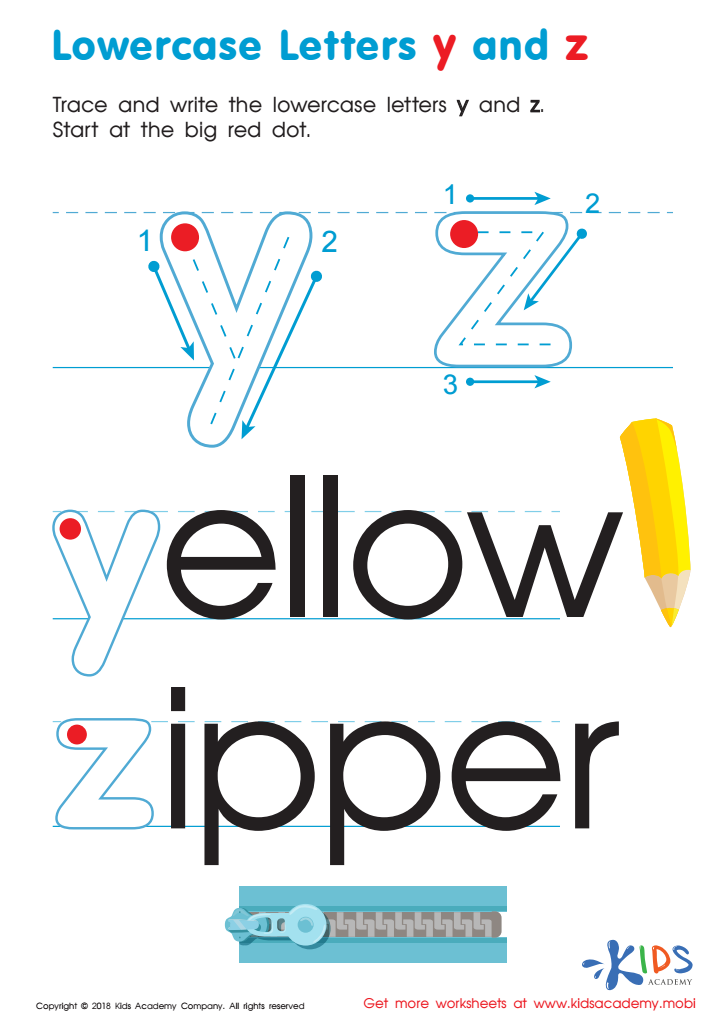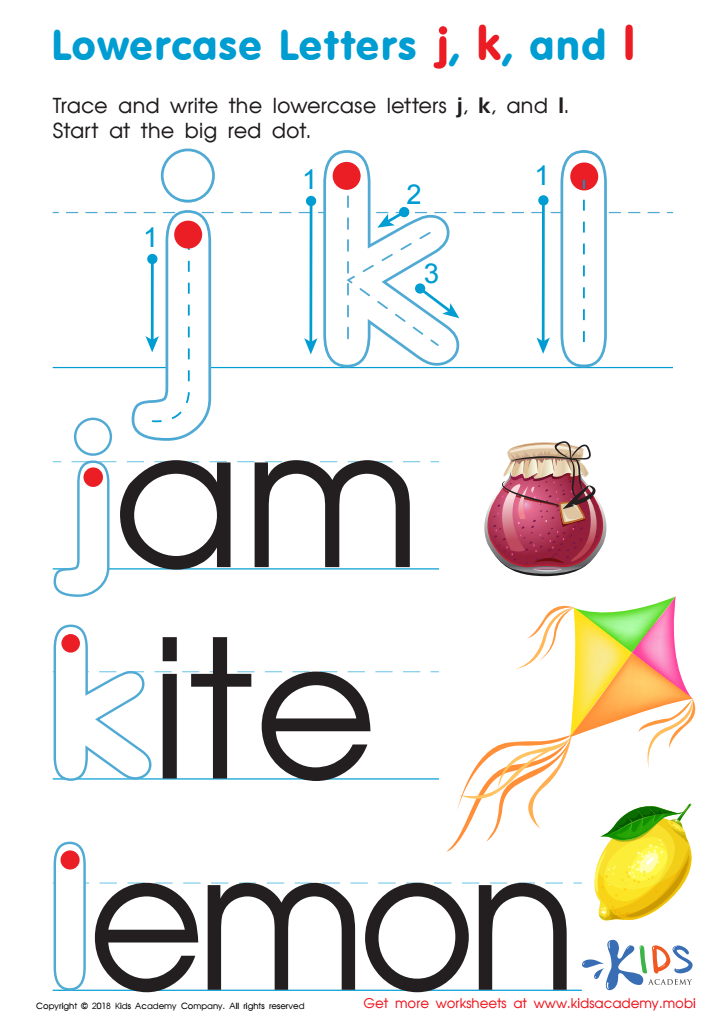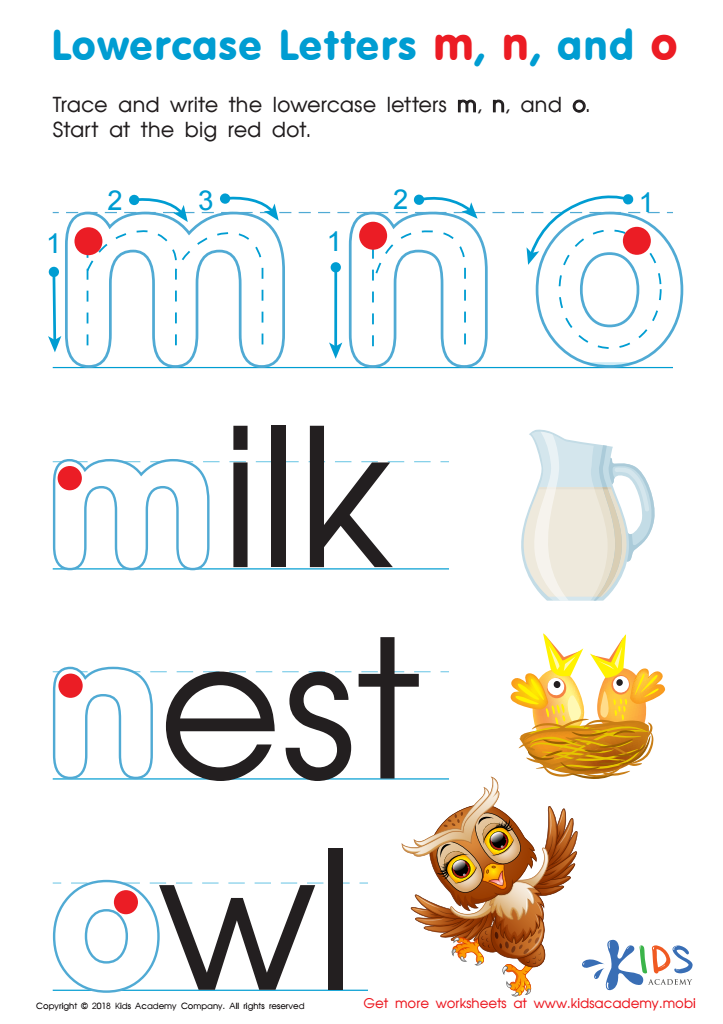Lowercase letter writing Tracing Letters Worksheets for Ages 6-8
3 filtered results
-
From - To
Enhance your child’s handwriting with our engaging "Lowercase Letter Writing Tracing Letters Worksheets for Ages 6-8." Designed to meet the developmental needs of early writers, these worksheets provide practice tracing lowercase letters, fostering fine motor skills and letter recognition vital for reading and writing. Each worksheet features guided lines and fun activities to make learning enjoyable and effective. Ideal for homeschool, classroom, or supplemental practice, our expertly crafted worksheets ensure children build a strong foundation in writing. Equip your child with the confidence and skills they need to succeed. Explore our collection at Kids Academy.


Lowercase Letters y z Worksheet


Lowercase Letters j k l Worksheet


Lowercase Letters m n o Worksheet
Parents and teachers should prioritize lowercase letter tracing for ages 6-8 as this foundational skill is pivotal for developing fine motor skills, improving handwriting, and fostering early literacy. At this age, children are in a crucial stage of hand-eye coordination development. Tracing activities require them to control their hand movements precisely, enhancing their dexterity and motor control, which are essential for all handwriting tasks.
Lowercase letters are most commonly used in reading and writing. Proficiency in writing them helps children recognize and familiarize themselves with text structure they will encounter in books and written material. Tracing these letters can significantly enhance their ability to read and spell words, providing a smoother transition into more complex literacy skills.
Moreover, tracing letters aids in cognitive development. It reinforces the shapes, sounds, and formations of each letter, creating a multisensory learning experience that solidifies their understanding and memory. This practice also instills a sense of discipline and concentration, as meticulously following the outline of each letter requires focus and patience.
In short, investing time in lowercase letter tracing for young learners creates a solid foundation for their academic journey, leading to improved reading, writing proficiency, and overall confidence in their educational pursuits.
 Assign to My Students
Assign to My Students




















